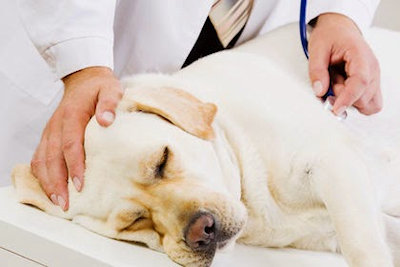Anticoagulant Rodenticide Poisoning
Dr. Jennifer Martin, Veterinary Technology Program Director, Colby Community College
According to the EPA, more than 100 pets die every year from being poisoned by anticoagulant rodenticides. When a pet presents to your veterinary hospital with a history of ingesting anticoagulant rodenticide bait, there are several questions you should ask the client. When and how much of the substance was ingested? Is there evidence of the bait in the vomitus or the stool? What is the name of the product that was ingested? The client should bring a package of the bait with them to their appointment, if possible.
 The questions above are important because they dictate the laboratory testing and course of treatment your veterinarian may pursue. For example, if the poison was ingested less than four hours before treatment, an antiemetic may be administered to rid the stomach of the bait. Activated charcoal may also be administered to slow absorption. Your veterinarian may prescribe the antidote, vitamin K1, to be given by mouth daily for three to four weeks. Administering vitamin K1 with a fatty meal, such as some canned pet food, will enhance absorption. Clients must be told to administer the entire prescription of vitamin K1, because some rodenticides can be reactivated for up to six weeks post-ingestion. In severe cases, whole blood transfusions may be needed to replace red blood cells and clotting factors. Fresh plasma or fresh frozen plasma may be administered if only clotting factors are necessary.
The questions above are important because they dictate the laboratory testing and course of treatment your veterinarian may pursue. For example, if the poison was ingested less than four hours before treatment, an antiemetic may be administered to rid the stomach of the bait. Activated charcoal may also be administered to slow absorption. Your veterinarian may prescribe the antidote, vitamin K1, to be given by mouth daily for three to four weeks. Administering vitamin K1 with a fatty meal, such as some canned pet food, will enhance absorption. Clients must be told to administer the entire prescription of vitamin K1, because some rodenticides can be reactivated for up to six weeks post-ingestion. In severe cases, whole blood transfusions may be needed to replace red blood cells and clotting factors. Fresh plasma or fresh frozen plasma may be administered if only clotting factors are necessary.
Rodenticides work by antagonizing vitamin K, which causes the vitamin K1 dependent clotting factors II, VII, IX, and X to be depleted. It may take one to seven days after ingestion for this to occur and for clinical signs to develop. Clinical signs may initially include lethargy, anorexia, and weakness, and progress to vomiting, diarrhea, melena, dyspnea, hemothorax, epistaxis, hemoptysis, hemorrhaging, swollen joints, bruising, and pale mucous membrane color. Acute death is also possible.
Your veterinarian may ask you to perform laboratory tests on the patient. Prothrombin time (PT), activated partial thromboplastin time (APTT), activated clotting time (ACT), and CBC’s are commonly performed tests. Your veterinarian may request a PT as a baseline test prior to vitamin K administration, and again 48 and 72 hours after exposure. A prolonged PT may be present before clinical signs are apparent as factor VII has the shortest half-life. Once factor II is deficient, the PT and APTT will be prolonged and clinical signs of bleeding will appear. It is important to note that the patient’s PT should be checked 72 hours after the last dose of vitamin K1. If the PT is normal, no further treatment is necessary. If the PT is prolonged, an additional week of treatment would be required.
The severity of the case and the length of treatment are affected by how much of the bait was ingested and its “generation.” The product name and/or ingredient list will allow you determine if the bait is “first generation,” “intermediate generation,” or “second generation.” First generation and intermediate generation anticoagulant rodenticides kill over several feedings, and are less potent than second generation baits that kill after a single feeding. First generation baits contain ingredients such as warfarin, coumarin, pindone, coumafuryl, coumachlor, isovaleryl, or indanedione, and intermediate generation baits contain ingredients such as chlorophacinone and diphacinone. Second generation baits contain brodifacoum, bromadiolone, or difethialone. First generation and intermediate generation baits depress clotting factors for 7-10 days, while second generation baits may depress clotting factors for three to four weeks and therefore require a longer course of treatment.